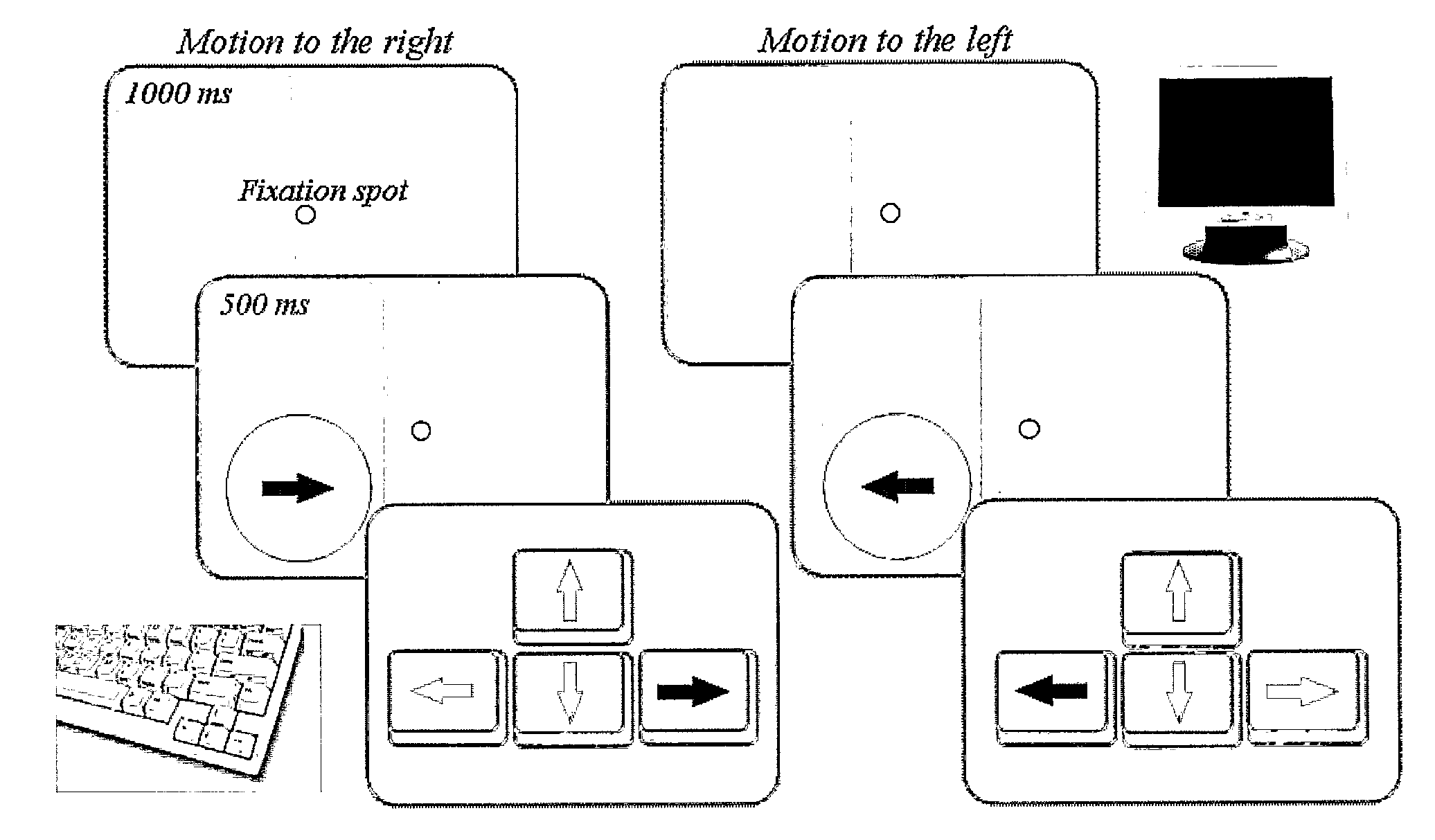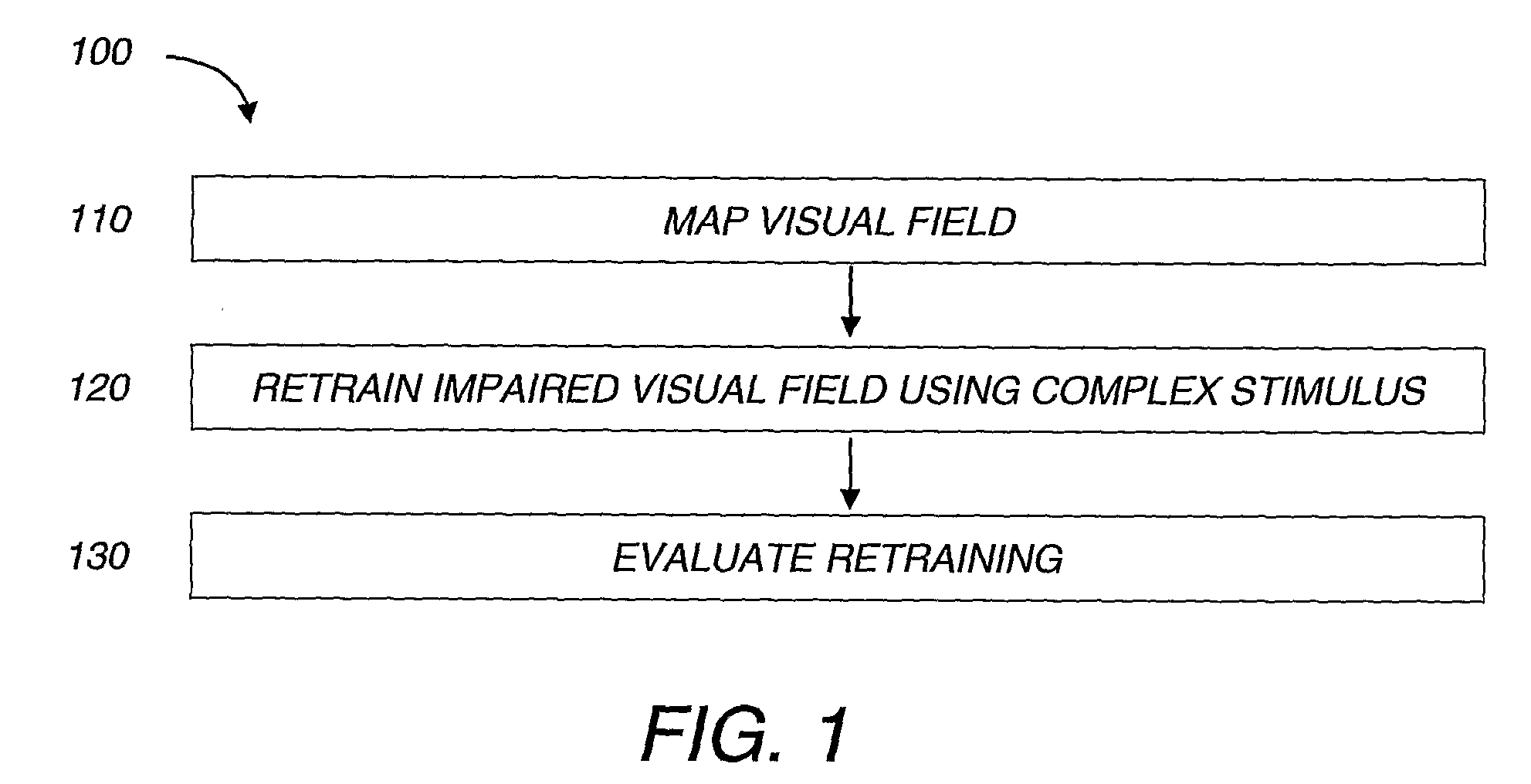Systems and methods For Improving Visual Discrimination
a visual discrimination and computerized training technology, applied in the field of visual discrimination computerized training and/or evaluation, can solve the problems of loss of visual functions in adulthood, impaired or lost conscious vision in one or more portions of the visual field, and not being able to recover in adulthood, so as to reduce the effect of light scattering and glar
- Summary
- Abstract
- Description
- Claims
- Application Information
AI Technical Summary
Benefits of technology
Problems solved by technology
Method used
Image
Examples
example 1
[0137]Two adult humans, one male and one female, both 51 years of age, were recruited about one year after their strokes. Both suffered damage affecting V1 and extrastriate visual cortical areas, as determined from MRI scans of their heads.
[0138]FIG. 8A-FIG. 8E are MRI scans of Patient 1's cortical lesion. FIG. 8A is a T1 weighted scan of the left cerebral hemisphere showing an intact MT complex. FIG. 8B is a T1 scan showing the occipital damage (dark cortex) affecting V1 on both banks of the calcarine sulcus, as well as extrastriate areas ventrally. FIG. 8C is a reference image, showing planes where sections illustrated in FIG. 8D and FIG. 8E were collected. FIG. 8D and FIG. 8E are T2 weighted sections showing extensive damage (*) to cortex and white matter in the banks of the calcarine sulcus, as well as in the medial and infero-temporal lobe of the left hemisphere.
[0139]FIG. 9A-FIG. 9G are T1-weighted MRI scans of Patient 2's multiple brain lesions. FIG. 9A is a horizontal scans ...
example 2
[0163]FIG. 17 is an exemplary data file 1700 used in step 120 of the training system. The illustrated file includes data and / or parameters that is not included in other embodiments of data files. Furthermore, other embodiments include data and / or parameters not present in the illustrated embodiment. The illustrated embodiment includes a block 1710 for the subject's name or other identifier and the date and time of the retraining session. Block 1720 includes the software version, the name of the file containing the parameters for the retraining session, the duration of the session, and the parameters for the visual stimulus used in the session, which in this example, is a random dot stimulus. In particular, the stimulus has 208 dots, where each dot is 2×2 pixels, no noise dots (100% signal), and moves left and right. (Direction Difference: 180°). Block 1730 includes the parameters for the gaze fixation, the location of the stimulus in relation to the fixation spot (6.5°, 6°), and the...
PUM
 Login to View More
Login to View More Abstract
Description
Claims
Application Information
 Login to View More
Login to View More - R&D
- Intellectual Property
- Life Sciences
- Materials
- Tech Scout
- Unparalleled Data Quality
- Higher Quality Content
- 60% Fewer Hallucinations
Browse by: Latest US Patents, China's latest patents, Technical Efficacy Thesaurus, Application Domain, Technology Topic, Popular Technical Reports.
© 2025 PatSnap. All rights reserved.Legal|Privacy policy|Modern Slavery Act Transparency Statement|Sitemap|About US| Contact US: help@patsnap.com



